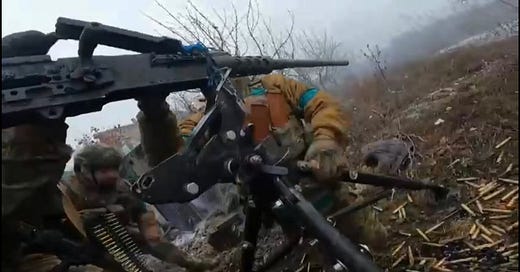“Mercenaries and auxiliaries are useless and dangerous; and if one holds his state based on these arms, he will stand neither firm nor safe; for they are disunited, ambitious, and without discipline, unfaithful, valiant before friends, cowardly before enemies.” —Niccolo Machiavelli, The Prince
“Spectacle is the sun that never sets over the empire of modern passivity.”
―Guy Debord, Society of the Spectacle
In the end, the high-definition keeps running.
Running aghast, running still.
The target, the visiting human, with built-in stability control for the unstable user, records continuously, for the guys back home and any strangers scrolling.
So many views, teardrop emoji’s and can you please subscribe. . . .
Pretty cool, eh?
Cool for both the horrified and the amused.
As if actual mortal combat could sustain some modernized Good vs. Evil mythology.
The cause for such sacrifices becomes obscure but not the uncovered urgency. After all, a prolonged cease-fire cannot rival the spectacle.
The camera keeps rolling until someone else cuts the feed.
If newsreels brought the Second World War into theaters, and the Six-O’clock News, the Vietnam slaughter into living rooms, we now have the killing fields in the palm of our hands.
Drones have become the miniaturized Angels of Death, perpetually lightweight, maneuverable, deadly.
Progress as a real-life video game.
Today, the algorithms can easily find motionless victims, to be uploaded, from updated murder machines, better aim and suicidal hubris.
In the foreground, perhaps a faint whimper of pain, with a backdrop of unrecognizable shouts — from a foreign language never grasped, only gleaned for a few key phrases — as if that could save a life or redirect a fired round.
A drifting cloud for the digital cloud, further testing the limits of Kevlar diplomacy, for another dopamine reel rush, for any witness stuck in the endless loop of spectacle(s) — although more for addicts than sadists, within the dark web and darkening expectations of us all.
As fights in the cafeteria, hallways and even classrooms seamlessly merge into more lethal versions across the electrified way, the online smuggling keeps churning a sea of anxious attractions, a software version of a hundred miles of floating plastic far from the ocean shoreline.
In the end, it’s always a view of the sky.
Maybe a hand outstretched in the frame, reaching, as if pointing to the dying scan of a setting sun or distant stratocumulus.
Look, ma, my last seconds of existence.
The colors fading, along with the final pulses of blood, the grim picture frozen in the snow, the mud, the grassy knolls.
We look up collectively into these clouds, an uneasy foreshadowing of our own exit — until the circus reel resumes, erasing more moments to collect ourselves, our consciousness and even our conscience.
In this controlled-burn apocalypse, how do we teach?
How do we learn?
How do we dare live, when such disruptions keep erupting, with only the sky to hold us back?






Great piece, Bill.
Writers of the past had to paint a picture of what war looked like. Now, it is 3,2,1...action! We are detached spies. Exposure creates fear and a willingness to be part of the action in our young people. Wars are stupid. Civilians are in mortal danger. For what? For living near the live action set? This will never be sustainable. Love and peace, brother.